2025
|
| Ayaz, Sajad Muhammad; Húdoková, Hana; Jamnická, Gabriela; Fleischer, Peter; Ditmarová, Ľubica; Razzak, Abdul; Ježík, Marek Relation between drought-exposed photosynthetic apparatus and tree water deficit derived from stem diameter variations in Norway spruce seedlings Journal Article Folia Oecologica, 52 (2), pp. 124–138, 2025, ISSN: 1338-7014. Links | BibTeX @article{Ayaz_2025,
title = {Relation between drought-exposed photosynthetic apparatus and tree water deficit derived from stem diameter variations in Norway spruce seedlings},
author = {Sajad Muhammad Ayaz and Hana Húdoková and Gabriela Jamnická and Peter Fleischer and Ľubica Ditmarová and Abdul Razzak and Marek Ježík},
url = {http://ife.sk/wp-content/uploads/2020/09/foecol-2025-0013.pdf},
doi = {10.2478/foecol-2025-0013},
issn = {1338-7014},
year = {2025},
date = {2025-07-01},
journal = {Folia Oecologica},
volume = {52},
number = {2},
pages = {124--138},
publisher = {Walter de Gruyter GmbH},
keywords = {},
pubstate = {published},
tppubtype = {article}
}
|
2023
|
 | HÚDOKOVÁ, H; JR, FLEISCHER P; JEŽÍK, M; MAREŠOVÁ, J; PŠIDOVÁ, E; MUKARRAM, M; DITMAROVÁ, Ľ; SLIACKA-KONÔPKOVÁ, A; JAMNICKÁ, G Can seedlings of Norway spruce (Picea abies L. H. Karst.) populations withstand changed climate conditions? Journal Article Photosynthetica, 61 (3), pp. 328–341, 2023, ISSN: 1573-9058. Links | BibTeX @article{H_DOKOV__2023,
title = {Can seedlings of Norway spruce (Picea abies L. H. Karst.) populations withstand changed climate conditions?},
author = {H HÚDOKOVÁ and P FLEISCHER JR and M JEŽÍK and J MAREŠOVÁ and E PŠIDOVÁ and M MUKARRAM and Ľ DITMAROVÁ and A SLIACKA-KONÔPKOVÁ and G JAMNICKÁ},
url = {http://dx.doi.org/10.32615/ps.2023.026},
doi = {10.32615/ps.2023.026},
issn = {1573-9058},
year = {2023},
date = {2023-10-01},
journal = {Photosynthetica},
volume = {61},
number = {3},
pages = {328–341},
publisher = {Institute of Experimental Botany},
keywords = {},
pubstate = {published},
tppubtype = {article}
}
|
 | Gömöry, Dušan; Ditmarová, Ľubica; Hrivnák, Matúš; Jamnická, Gabriela; Konôpková, Alena; Krajmerová, Diana; Kurjak, Daniel; Marešová, Jana Inconsistent phenotypic differentiation at physiological traits in Norway spruce (Picea abies Karst.) provenances under contrasting water regimes Journal Article Central European Forestry Journal, 69 (4), pp. 214–223, 2023, ISSN: 2454-0358. Links | BibTeX @article{G_m_ry_2023,
title = {Inconsistent phenotypic differentiation at physiological traits in Norway spruce (Picea abies Karst.) provenances under contrasting water regimes},
author = {Dušan Gömöry and Ľubica Ditmarová and Matúš Hrivnák and Gabriela Jamnická and Alena Konôpková and Diana Krajmerová and Daniel Kurjak and Jana Marešová},
url = {http://dx.doi.org/10.2478/forj-2023-0010},
doi = {10.2478/forj-2023-0010},
issn = {2454-0358},
year = {2023},
date = {2023-01-01},
journal = {Central European Forestry Journal},
volume = {69},
number = {4},
pages = {214–223},
publisher = {Walter de Gruyter GmbH},
keywords = {},
pubstate = {published},
tppubtype = {article}
}
|
2022
|
 | Hrivnák, Matúš; Krajmerová, Diana; Kurjak, Daniel; Konôpková, Alena; Magni, Federica; Scaglione, Davide; Ditmarová, Ľubica; Jamnická, Gabriela; Marešová, Jana; Gömöry, Dušan Differential associations between nucleotide polymorphisms and physiological traits in Norway spruce (Picea abiesKarst.) plants under contrasting water regimes Journal Article Forestry: An International Journal of Forest Research, 2022, ISSN: 1464-3626. Links | BibTeX @article{Hrivn_k_2022,
title = {Differential associations between nucleotide polymorphisms and physiological traits in Norway spruce (Picea abiesKarst.) plants under contrasting water regimes},
author = {Matúš Hrivnák and Diana Krajmerová and Daniel Kurjak and Alena Konôpková and Federica Magni and Davide Scaglione and Ľubica Ditmarová and Gabriela Jamnická and Jana Marešová and Dušan Gömöry},
editor = {Berthold Heinze},
url = {http://dx.doi.org/10.1093/forestry/cpac027},
doi = {10.1093/forestry/cpac027},
issn = {1464-3626},
year = {2022},
date = {2022-07-01},
journal = {Forestry: An International Journal of Forest Research},
publisher = {Oxford University Press (OUP)},
keywords = {},
pubstate = {published},
tppubtype = {article}
}
|
 | Marešová, Jana; Húdoková, Hana; Sarvašová, Lenka; Fleischer, Peter; Ditmarová, Ľubica; Blaženec, Miroslav; Jamnická, Gabriela Dynamics of internal isoprenoid metabolites in young Picea abies (Norway spruce) shoots during drought stress conditions in springtime Journal Article Phytochemistry, 203 , pp. 113414, 2022, ISSN: 0031-9422. Links | BibTeX @article{Mare_ov__2022,
title = {Dynamics of internal isoprenoid metabolites in young Picea abies (Norway spruce) shoots during drought stress conditions in springtime},
author = {Jana Marešová and Hana Húdoková and Lenka Sarvašová and Peter Fleischer and Ľubica Ditmarová and Miroslav Blaženec and Gabriela Jamnická},
url = {http://dx.doi.org/10.1016/j.phytochem.2022.113414},
doi = {10.1016/j.phytochem.2022.113414},
issn = {0031-9422},
year = {2022},
date = {2022-01-01},
journal = {Phytochemistry},
volume = {203},
pages = {113414},
publisher = {Elsevier BV},
keywords = {},
pubstate = {published},
tppubtype = {article}
}
|
 | Salomón, Roberto L; Peters, Richard L; Zweifel, Roman; Sass-Klaassen, Ute G W; Stegehuis, Annemiek I; Smiljanic, Marko; Poyatos, Rafael; Babst, Flurin; Cienciala, Emil; Fonti, Patrick; Lerink, Bas J W; Lindner, Marcus; Martinez-Vilalta, Jordi; Mencuccini, Maurizio; Nabuurs, Gert-Jan; van der Maaten, Ernst; von Arx, Georg; Bär, Andreas; Akhmetzyanov, Linar; Balanzategui, Daniel; Bellan, Michal; Bendix, Jörg; Berveiller, Daniel; Blaženec, Miroslav; Čada, Vojtěch; Carraro, Vinicio; Cecchini, Sébastien; Chan, Tommy; Conedera, Marco; Delpierre, Nicolas; Delzon, Sylvain; Ditmarová, Ľubica; Dolezal, Jiri; Dufrêne, Eric; Edvardsson, Johannes; Ehekircher, Stefan; Forner, Alicia; Frouz, Jan; Ganthaler, Andrea; Gryc, Vladimír; Güney, Aylin; Heinrich, Ingo; Hentschel, Rainer; Janda, Pavel; Ježík, Marek; Kahle, Hans-Peter; Knüsel, Simon; Krejza, Jan; Kuberski, Łukasz; Kučera, Jiří; Lebourgeois, François; Mikoláš, Martin; Matula, Radim; Mayr, Stefan; Oberhuber, Walter; Obojes, Nikolaus; Osborne, Bruce; Paljakka, Teemu; Plichta, Roman; Rabbel, Inken; Rathgeber, Cyrille B K; Salmon, Yann; Saunders, Matthew; Scharnweber, Tobias; Sitková, Zuzana; Stangler, Dominik Florian; Stereńczak, Krzysztof; Stojanović, Marko; Střelcová, Katarína; Světlík, Jan; Svoboda, Miroslav; Tobin, Brian; Trotsiuk, Volodymyr; Urban, Josef; Valladares, Fernando; Vavrčík, Hanuš; Vejpustková, Monika; Walthert, Lorenz; Wilmking, Martin; Zin, Ewa; Zou, Junliang; Steppe, Kathy The 2018 European heatwave led to stem dehydration but not to consistent growth reductions in forests Journal Article Nature Communications, 13 (1), 2022, ISSN: 2041-1723. Links | BibTeX @article{Salom_n_2022,
title = {The 2018 European heatwave led to stem dehydration but not to consistent growth reductions in forests},
author = {Roberto L Salomón and Richard L Peters and Roman Zweifel and Ute G W Sass-Klaassen and Annemiek I Stegehuis and Marko Smiljanic and Rafael Poyatos and Flurin Babst and Emil Cienciala and Patrick Fonti and Bas J W Lerink and Marcus Lindner and Jordi Martinez-Vilalta and Maurizio Mencuccini and Gert-Jan Nabuurs and Ernst van der Maaten and Georg von Arx and Andreas Bär and Linar Akhmetzyanov and Daniel Balanzategui and Michal Bellan and Jörg Bendix and Daniel Berveiller and Miroslav Blaženec and Vojtěch Čada and Vinicio Carraro and Sébastien Cecchini and Tommy Chan and Marco Conedera and Nicolas Delpierre and Sylvain Delzon and Ľubica Ditmarová and Jiri Dolezal and Eric Dufrêne and Johannes Edvardsson and Stefan Ehekircher and Alicia Forner and Jan Frouz and Andrea Ganthaler and Vladimír Gryc and Aylin Güney and Ingo Heinrich and Rainer Hentschel and Pavel Janda and Marek Ježík and Hans-Peter Kahle and Simon Knüsel and Jan Krejza and Łukasz Kuberski and Jiří Kučera and François Lebourgeois and Martin Mikoláš and Radim Matula and Stefan Mayr and Walter Oberhuber and Nikolaus Obojes and Bruce Osborne and Teemu Paljakka and Roman Plichta and Inken Rabbel and Cyrille B K Rathgeber and Yann Salmon and Matthew Saunders and Tobias Scharnweber and Zuzana Sitková and Dominik Florian Stangler and Krzysztof Stereńczak and Marko Stojanović and Katarína Střelcová and Jan Světlík and Miroslav Svoboda and Brian Tobin and Volodymyr Trotsiuk and Josef Urban and Fernando Valladares and Hanuš Vavrčík and Monika Vejpustková and Lorenz Walthert and Martin Wilmking and Ewa Zin and Junliang Zou and Kathy Steppe},
url = {http://dx.doi.org/10.1038/s41467-021-27579-9},
doi = {10.1038/s41467-021-27579-9},
issn = {2041-1723},
year = {2022},
date = {2022-01-01},
journal = {Nature Communications},
volume = {13},
number = {1},
publisher = {Springer Science and Business Media LLC},
keywords = {},
pubstate = {published},
tppubtype = {article}
}
|
2021
|
 | Ježík, Marek; Blaženec, Miroslav; Mezei, Pavel; Sedmáková, Denisa; Sedmák, Róbert; Fleischer, Peter; Fleischer, Peter; Bošeľa, Michal; Kurjak, Daniel; Střelcová, Katarína; Ditmarová, Ľubica Influence of weather and day length on intra-seasonal growth of Norway spruce (Picea abies) and European beech (Fagus sylvatica) in a natural montane forest Journal Article Canadian Journal of Forest Research, 51 (12), pp. 1799–1810, 2021, ISSN: 1208-6037. Links | BibTeX @article{Je_k_2021,
title = {Influence of weather and day length on intra-seasonal growth of Norway spruce (Picea abies) and European beech (Fagus sylvatica) in a natural montane forest},
author = {Marek Ježík and Miroslav Blaženec and Pavel Mezei and Denisa Sedmáková and Róbert Sedmák and Peter Fleischer and Peter Fleischer and Michal Bošeľa and Daniel Kurjak and Katarína Střelcová and Ľubica Ditmarová},
url = {http://dx.doi.org/10.1139/cjfr-2020-0067},
doi = {10.1139/cjfr-2020-0067},
issn = {1208-6037},
year = {2021},
date = {2021-12-01},
journal = {Canadian Journal of Forest Research},
volume = {51},
number = {12},
pages = {1799–1810},
publisher = {Canadian Science Publishing},
keywords = {},
pubstate = {published},
tppubtype = {article}
}
|
2020
|
 | Jamnická, Gabriela; Konôpková, Alena; Fleischer, Peter; Kurjak, Daniel; Petrík, Peter; Petek, Anja; Húdoková, Hana; Fleischer, Peter; Homolová, Zuzana; Ježík, Marek; Ditmarová, Ľubica Physiological vitality of Norway spruce (Picea abies L.) stands along an altitudinal gradient in Tatra National Park Journal Article Central European Forestry Journal, 66 (4), pp. 227-242, 2020, ISBN: 2454-034X. Abstract | Links | BibTeX @article{Jamnická2020,
title = {Physiological vitality of Norway spruce (\textit{Picea abies} L.) stands along an altitudinal gradient in Tatra National Park},
author = {Gabriela Jamnická and Alena Konôpková and Peter Fleischer and Daniel Kurjak and Peter Petrík and Anja Petek and Hana Húdoková and Peter Fleischer and Zuzana Homolová and Marek Ježík and Ľubica Ditmarová},
doi = {10.2478/forj-2020-0019},
isbn = {2454-034X},
year = {2020},
date = {2020-12-02},
journal = {Central European Forestry Journal},
volume = {66},
number = {4},
pages = {227-242},
abstract = {Nowadays, a large area of Norway spruce forest stands in Europe is disturbed by windstorm and, subsequently, bark beetle outbreaks. We investigated the state of three disturbed spruce stands along an altitudinal gradient in Tatra National Park (Slovakia) through various physiological processes. Tree-growth characteristics, the mineral nutrition in the needles, and photosynthetic efficiency were assessed. Two techniques of chlorophyll a fluorescence and analyses of assimilatory pigments were used to detect the changes in photosynthesis functioning. Also, the heat sensitivity of photosystem II was tested. Our results showed that these stands are located in nutrient-poor environments. We recorded similar contents of nitrogen, phosphorus, potassium, sodium, zinc, and iron in all stands. Down the vertical transect, the contents of calcium, magnesium, and manganese significantly decreased and the non-essential aluminium increased. Based on stem circumference measurements, water deficit occurred during the vegetation season in all stands, but with the smallest magnitude highest U–stand. We found some photosynthetic constraints: slightly lower chlorophyll contents in all stands were recorded; however, seasonal dynamics with increasing chlorophyll concentration in the highest U–stand were observed. Moreover, the photochemistry of the lowest D–stand was the most negatively influenced by simulated heat, as the photosynthetic performance index, and the density of the active reactions centres significantly decreased and the values of the K–step and basal fluorescence increased. Therefore, we can conclude the different levels of physiological vitality in these naturally damaged spruce stands, with the best physiological performance of the trees in the highest stand.},
keywords = {},
pubstate = {published},
tppubtype = {article}
}
Nowadays, a large area of Norway spruce forest stands in Europe is disturbed by windstorm and, subsequently, bark beetle outbreaks. We investigated the state of three disturbed spruce stands along an altitudinal gradient in Tatra National Park (Slovakia) through various physiological processes. Tree-growth characteristics, the mineral nutrition in the needles, and photosynthetic efficiency were assessed. Two techniques of chlorophyll a fluorescence and analyses of assimilatory pigments were used to detect the changes in photosynthesis functioning. Also, the heat sensitivity of photosystem II was tested. Our results showed that these stands are located in nutrient-poor environments. We recorded similar contents of nitrogen, phosphorus, potassium, sodium, zinc, and iron in all stands. Down the vertical transect, the contents of calcium, magnesium, and manganese significantly decreased and the non-essential aluminium increased. Based on stem circumference measurements, water deficit occurred during the vegetation season in all stands, but with the smallest magnitude highest U–stand. We found some photosynthetic constraints: slightly lower chlorophyll contents in all stands were recorded; however, seasonal dynamics with increasing chlorophyll concentration in the highest U–stand were observed. Moreover, the photochemistry of the lowest D–stand was the most negatively influenced by simulated heat, as the photosynthetic performance index, and the density of the active reactions centres significantly decreased and the values of the K–step and basal fluorescence increased. Therefore, we can conclude the different levels of physiological vitality in these naturally damaged spruce stands, with the best physiological performance of the trees in the highest stand. |
 | Konôpková, Alena; Pšidová, Eva; Kurjak, Daniel; Stojnić, Srđan; Petrík, Peter; Jr, Peter Fleischer; Kučerová, Jana; Ježík, Marek; Petek, Anja; Gömöry, Dušan; Kmeť, Jaroslav; Longauer, Roman; Ditmarová, Ľubica Photosynthetic performance of silver fir (Abies alba) of different origins under suboptimal growing conditions Journal Article Functional Plant Biology, 47 (11), pp. 1007-1018, 2020, ISSN: 1445-4408. Abstract | Links | BibTeX @article{Konôpková2020c,
title = {Photosynthetic performance of silver fir (\textit{Abies alba}) of different origins under suboptimal growing conditions},
author = {Alena Konôpková and Eva Pšidová and Daniel Kurjak and Srđan Stojnić and Peter Petrík and Peter Fleischer Jr and Jana Kučerová and Marek Ježík and Anja Petek and Dušan Gömöry and Jaroslav Kmeť and Roman Longauer and Ľubica Ditmarová},
doi = {10.1071/FP20040},
issn = {1445-4408},
year = {2020},
date = {2020-06-24},
journal = {Functional Plant Biology},
volume = {47},
number = {11},
pages = {1007-1018},
abstract = {Understanding of the intraspecific variability in the physiological stress response of trees may enable to mitigate the impact of climate change on forest ecosystems in the future. We studied the photosynthetic performance of five silver fir (Abies alba Mill.) provenances originating from climatically distinct localities. The study was performed in the trial plot of the silver fir provenance experiment IUFRO 2005 on two dates: in the early summer and in the late summer. Heat waves and a decrease in water availability occurred between the two measurement dates, allowing us to study the response of the provenances to suboptimal growing conditions. The provenances were evaluated at the level of PSII photochemistry and CO2 assimilation by measuring photosynthesis-related pigment content, chlorophyll a fluorescence, and gas exchange parameters. Significant climatic clines were confirmed: the photosynthetic performance before and after the stress period increased with the increasing altitude and precipitation at the site of origin. In contrast, photosynthetic performance declined with the increasing temperature and Ellenberg’s quotient of the origin site. We concluded that provenances originating from high altitudes, corresponding well with more humid and colder conditions in Central Europe, showed the greatest photosynthetic performance and were less responsive to moderate heat and drought. This documents inter-population variation in physiological traits, which needs to be considered in setting rules and recommendations for the transfer of forest reproductive materials.},
keywords = {},
pubstate = {published},
tppubtype = {article}
}
Understanding of the intraspecific variability in the physiological stress response of trees may enable to mitigate the impact of climate change on forest ecosystems in the future. We studied the photosynthetic performance of five silver fir (Abies alba Mill.) provenances originating from climatically distinct localities. The study was performed in the trial plot of the silver fir provenance experiment IUFRO 2005 on two dates: in the early summer and in the late summer. Heat waves and a decrease in water availability occurred between the two measurement dates, allowing us to study the response of the provenances to suboptimal growing conditions. The provenances were evaluated at the level of PSII photochemistry and CO2 assimilation by measuring photosynthesis-related pigment content, chlorophyll a fluorescence, and gas exchange parameters. Significant climatic clines were confirmed: the photosynthetic performance before and after the stress period increased with the increasing altitude and precipitation at the site of origin. In contrast, photosynthetic performance declined with the increasing temperature and Ellenberg’s quotient of the origin site. We concluded that provenances originating from high altitudes, corresponding well with more humid and colder conditions in Central Europe, showed the greatest photosynthetic performance and were less responsive to moderate heat and drought. This documents inter-population variation in physiological traits, which needs to be considered in setting rules and recommendations for the transfer of forest reproductive materials. |
 | Konôpková, Alena; Húdoková, Hana; Ježík, Marek; Kurjak, Daniel; Jamnická, Gabriela; Ditmarová, Ľubica; Gömöry, Dušan; Longauer, R; Tognetti, Roberto; Pšidová, Eva Origin rather than mild drought stress influenced chlorophyll a fluorescence in contrasting silver fir (Abies alba Mill.) provenances Journal Article Photosynthetica : international journal for photosynthesis research, 58 , pp. 549-559, 2020, ISSN: 0300-3604. Abstract | Links | BibTeX @article{Konôpková2020b,
title = {Origin rather than mild drought stress influenced chlorophyll a fluorescence in contrasting silver fir (\textit{Abies alba Mill.}) provenances},
author = {Alena Konôpková and Hana Húdoková and Marek Ježík and Daniel Kurjak and Gabriela Jamnická and Ľubica Ditmarová and Dušan Gömöry and R. Longauer and Roberto Tognetti and Eva Pšidová},
doi = {10.32615/ps.2020.011},
issn = {0300-3604},
year = {2020},
date = {2020-01-01},
journal = {Photosynthetica : international journal for photosynthesis research},
volume = {58},
pages = {549-559},
abstract = {The performance of PSII photochemistry in five Central European provenances of silver fir differing in the altitude of origin (250-1,300 m a.s.l.) were studied using the chlorophyll a fluorescence parameters derived from the JIP-test. Measurements were performed on two dates in 2016: at the start and at the peak of growing season. Within this period, mild water stress was recorded, allowing us to monitor changes in photochemistry under drought conditions. Our results confirmed that silver fir is generally resistant to water deficit at the PSII level. However, the differences in photochemistry between provenances originating from different climatic conditions were observed. The high-altitude provenances (from wetter and colder localities) achieved higher PSII efficiency, which was also supported by clear trends along the climatic and geographic gradients of the provenance origins. After the drought, comparable PSII efficiency for low-altitude provenances and even higher for these originating in higher altitudes was observed.},
keywords = {},
pubstate = {published},
tppubtype = {article}
}
The performance of PSII photochemistry in five Central European provenances of silver fir differing in the altitude of origin (250-1,300 m a.s.l.) were studied using the chlorophyll a fluorescence parameters derived from the JIP-test. Measurements were performed on two dates in 2016: at the start and at the peak of growing season. Within this period, mild water stress was recorded, allowing us to monitor changes in photochemistry under drought conditions. Our results confirmed that silver fir is generally resistant to water deficit at the PSII level. However, the differences in photochemistry between provenances originating from different climatic conditions were observed. The high-altitude provenances (from wetter and colder localities) achieved higher PSII efficiency, which was also supported by clear trends along the climatic and geographic gradients of the provenance origins. After the drought, comparable PSII efficiency for low-altitude provenances and even higher for these originating in higher altitudes was observed. |
2019
|
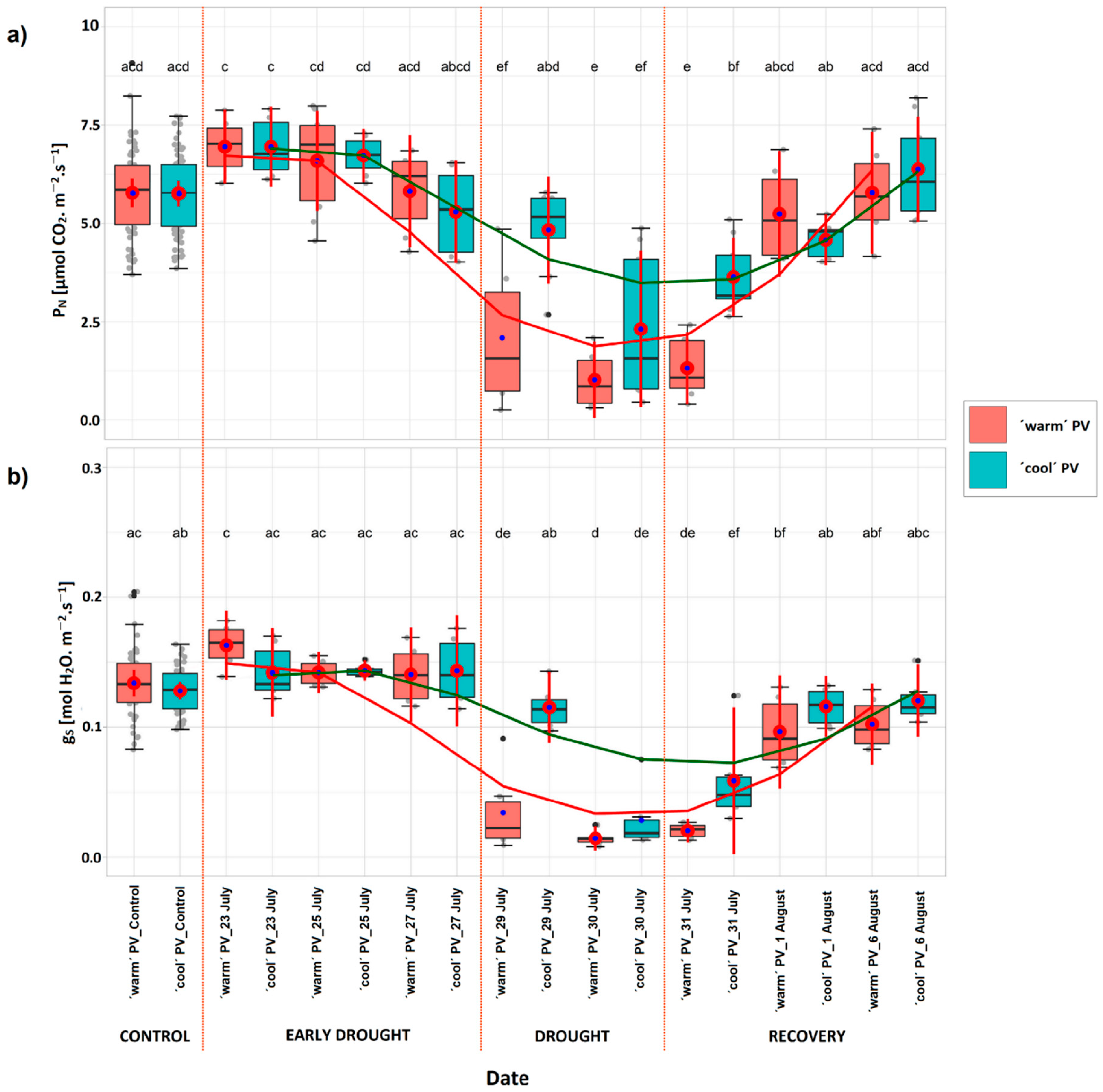 | Jamnická, Gabriela; Jr., Peter Fleischer; Konôpková, Alena; Pšidová, Eva; Kučerová, Jana; Kurjak, Daniel; Živčák, Marek; Ditmarová, Ľubica Norway Spruce (Picea abies L.) Provenances Use Different Physiological Strategies to Cope with Water Deficit Journal Article Forests, 10 (8), 2019, ISSN: 1999-4907. Abstract | Links | BibTeX @article{Jamnická2019,
title = {Norway Spruce (\textit{Picea abies} L.) Provenances Use Different Physiological Strategies to Cope with Water Deficit},
author = {Gabriela Jamnická and Peter Fleischer Jr. and Alena Konôpková and Eva Pšidová and Jana Kučerová and Daniel Kurjak and Marek Živčák and Ľubica Ditmarová
},
doi = {10.3390/f10080651},
issn = {1999-4907},
year = {2019},
date = {2019-08-01},
journal = {Forests},
volume = {10},
number = {8},
abstract = {Research Highlights: In this study, we found different regulatory mechanisms in two contrasting provenances of Norway spruce responding to progressive drought stress. Background and Objectives: In the context of climate and environmental changes, the following question of high importance in scientific studies is: How will Norway spruce, which forms a dominant component in European mountain and boreal forests, be able to cope with the increasing frequencies and intensities of drought periods? The aim of the study was to investigate the physiological responses of eight-month-old seedlings, as a most vulnerable phase of forest tree life, for different spruce provenances, to find out variable strategies in relation to controlled drought stress. Materials and Methods: We performed an experiment under controlled conditions with spruce seedlings from a climatologically warmer stand of 410 m above sea level (a.s.l.), and a moderately cool stand of 931 m a.s.l. The soil water content, leaf predawn water potential, the osmotic potential of needles, the relative water content of needles, and the photosynthetic performance and the contents of primary metabolites (proline and abscisic acid) were investigated as indicators of the spruce seedlings’ responses to water stress. The status of the indicators was analyzed at different temporal intervals, using repeated measures analysis of variance (ANOVA), reflecting the seedlings’ water conditions (early drought, drought, or recovery). On a daily basis, the differences among the indicators were tested with one-way ANOVA. A principal component analysis (PCA) was used to identify the provenance-specific responses of tree drought indicators in a multi-dimensional data set. Results: The responses to drought stress differed between the provenances. Whereas seedlings of ‘warm’ provenance from a low altitude performed a conservation strategy, with high amounts of accumulated abscisic acid and closing the stomata faster, the reactions of ‘cool’ provenance seedlings from a higher altitude were not so sensitive and the plants’ water supply and photosynthetic performance remained significantly higher. These findings indicate that a higher drought resistance in ‘cool’ provenance could be related to greater amounts of proline amino-acids, which are accumulated from the beginning of the drought simulation. Furthermore, proline accumulation resulting in increased stress tolerance is controlled through another mechanism than osmotic adjustment. Conclusions: The observed variations in the regulatory mechanisms used to develop adaptive strategies in different provenances are an important factor for seedling survival under a changing climate.},
keywords = {},
pubstate = {published},
tppubtype = {article}
}
Research Highlights: In this study, we found different regulatory mechanisms in two contrasting provenances of Norway spruce responding to progressive drought stress. Background and Objectives: In the context of climate and environmental changes, the following question of high importance in scientific studies is: How will Norway spruce, which forms a dominant component in European mountain and boreal forests, be able to cope with the increasing frequencies and intensities of drought periods? The aim of the study was to investigate the physiological responses of eight-month-old seedlings, as a most vulnerable phase of forest tree life, for different spruce provenances, to find out variable strategies in relation to controlled drought stress. Materials and Methods: We performed an experiment under controlled conditions with spruce seedlings from a climatologically warmer stand of 410 m above sea level (a.s.l.), and a moderately cool stand of 931 m a.s.l. The soil water content, leaf predawn water potential, the osmotic potential of needles, the relative water content of needles, and the photosynthetic performance and the contents of primary metabolites (proline and abscisic acid) were investigated as indicators of the spruce seedlings’ responses to water stress. The status of the indicators was analyzed at different temporal intervals, using repeated measures analysis of variance (ANOVA), reflecting the seedlings’ water conditions (early drought, drought, or recovery). On a daily basis, the differences among the indicators were tested with one-way ANOVA. A principal component analysis (PCA) was used to identify the provenance-specific responses of tree drought indicators in a multi-dimensional data set. Results: The responses to drought stress differed between the provenances. Whereas seedlings of ‘warm’ provenance from a low altitude performed a conservation strategy, with high amounts of accumulated abscisic acid and closing the stomata faster, the reactions of ‘cool’ provenance seedlings from a higher altitude were not so sensitive and the plants’ water supply and photosynthetic performance remained significantly higher. These findings indicate that a higher drought resistance in ‘cool’ provenance could be related to greater amounts of proline amino-acids, which are accumulated from the beginning of the drought simulation. Furthermore, proline accumulation resulting in increased stress tolerance is controlled through another mechanism than osmotic adjustment. Conclusions: The observed variations in the regulatory mechanisms used to develop adaptive strategies in different provenances are an important factor for seedling survival under a changing climate. |
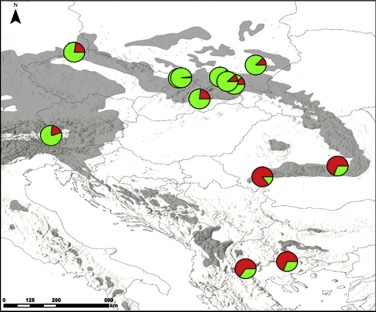 | Konôpková, Alena; Krajmerová, Diana; Kurjak, Daniel; Kmeť, Jaroslav; Pšidová, Eva; Kučerová, Jana; Hrivnák, Matúš; Longauer, Roman; Ditmarová, Ľubica; Gömöry, Dušan Nucleotide polymorphisms associated with climate and physiological traits in silver fir (Abies alba Mill.) provenances Journal Article Flora : morphology, distribution, functional ecology of plants, 250 , pp. 37-43, 2019, ISSN: 0367-2530. Abstract | Links | BibTeX @article{Konôpková2019,
title = {Nucleotide polymorphisms associated with climate and physiological traits in silver fir (\textit{Abies alba} Mill.) provenances},
author = {Alena Konôpková and Diana Krajmerová and Daniel Kurjak and Jaroslav Kmeť and Eva Pšidová and Jana Kučerová and Matúš Hrivnák and Roman Longauer and Ľubica Ditmarová and Dušan Gömöry},
doi = {10.1016/j.flora.2018.11.012},
issn = {0367-2530},
year = {2019},
date = {2019-01-01},
journal = {Flora : morphology, distribution, functional ecology of plants},
volume = {250},
pages = {37-43},
abstract = {Single-nucleotide polymorphisms in seven candidate genes for drought and heat tolerance identified in earlier studies were studied in 13 populations of Abies alba Mill. covering the eastern and southeastern half of the distribution range. Trees were planted in a provenance trial plot of the international experiment IUFRO 2005 in Hertník, Slovakia. In parallel, genotyped trees were also scored for physiological traits (PSII thermotolerance, chlorophyll a fluorescence kinetics, partly gas exchange, assimilatory pigments, needle osmotic potential). For the detection of natural selection imprints, we used different methods: analysis of FST-outliers, testing of SNP–climate associations and SNP–phenotype associations. FST-outlier analysis revealed 2 SNPs with signals of selection. Moreover, three other SNPs showed significant association with latitude or bioclimatic variables; one of them (C/T polymorphism in a gene coding for serine/threonine phosphatase) was significantly associated with needle osmotic potential and marginally with other drought-related physiological traits. That may indicate its role in drought-stress response. In addition, T/C polymorphism in a gene coding for reduced epidermal fluorescence 4 was found to be involved in heat-stress response. However, migration history seems to be a more important driver of differentiation at SNPs in the studied candidate genes than recent adaptation.},
keywords = {},
pubstate = {published},
tppubtype = {article}
}
Single-nucleotide polymorphisms in seven candidate genes for drought and heat tolerance identified in earlier studies were studied in 13 populations of Abies alba Mill. covering the eastern and southeastern half of the distribution range. Trees were planted in a provenance trial plot of the international experiment IUFRO 2005 in Hertník, Slovakia. In parallel, genotyped trees were also scored for physiological traits (PSII thermotolerance, chlorophyll a fluorescence kinetics, partly gas exchange, assimilatory pigments, needle osmotic potential). For the detection of natural selection imprints, we used different methods: analysis of FST-outliers, testing of SNP–climate associations and SNP–phenotype associations. FST-outlier analysis revealed 2 SNPs with signals of selection. Moreover, three other SNPs showed significant association with latitude or bioclimatic variables; one of them (C/T polymorphism in a gene coding for serine/threonine phosphatase) was significantly associated with needle osmotic potential and marginally with other drought-related physiological traits. That may indicate its role in drought-stress response. In addition, T/C polymorphism in a gene coding for reduced epidermal fluorescence 4 was found to be involved in heat-stress response. However, migration history seems to be a more important driver of differentiation at SNPs in the studied candidate genes than recent adaptation. |
2018
|
 | Kurjak, Daniel; Konôpková, Alena; Kmeť, Jaroslav; Macková, Miroslava; Frýdl, Josef; Živčák, Marek; Palmroth, Sari; Ditmarová, Ľubica; Gömöry, Dušan Variation in the performance and thermostability of photosystem II in European beech (Fagus sylvatica L.) provenances is influenced more by acclimation than by adaptation Journal Article European Journal of Forest Research, 138 (1), pp. 79-92, 2018, ISSN: 1612-4669. Abstract | Links | BibTeX @article{Kurjak2018,
title = {Variation in the performance and thermostability of photosystem II in European beech (\textit{Fagus sylvatica} L.) provenances is influenced more by acclimation than by adaptation},
author = {Daniel Kurjak and Alena Konôpková and Jaroslav Kmeť and Miroslava Macková and Josef Frýdl and Marek Živčák and Sari Palmroth and Ľubica Ditmarová and Dušan Gömöry},
doi = {10.1007/s10342-018-1155-7},
issn = {1612-4669},
year = {2018},
date = {2018-12-08},
journal = {European Journal of Forest Research},
volume = {138},
number = {1},
pages = {79-92},
abstract = {The assisted migration of resistant seeds and seedlings may be a key to mitigating the effects of climate change on the productivity and composition of forest ecosystems. These efforts require an understanding of the intraspecific variability in the response of trees to extreme weather events such as heat waves. In this study, we assessed the geographical patterns of photosystem II (PSII) performance and thermostability in European beech (Fagus sylvatica L.) and whether intraspecific differences are associated with climate of origin. Two provenance trials with starkly contrasting climates were used for this study. Leaves were sampled both before and after natural heat stress exposure. Rapid chlorophyll fluorescence kinetics was used to evaluate PSII performance and PSII thermostability after simulated heat stress. The performance of PSII at 30 °C, which is still considered a non-damaging temperature, was generally slightly better at the warmer location than at the colder location. The populations originating closer to the Slovenian refugium, as well as those growing closer to their site of origin, showed better performance of PSII but not greater thermostability. The effect of simulated heat stress was much stronger in the colder plots compared to the warmer plots, but only for previously stressed trees. Likewise, we found indicators of geographical patterns of thermotolerance as well as relationships between thermotolerance and climate of origin mostly for trees exposed to natural heat. While the origin of provenances partly explained the variation among provenances, acclimation driven by climate played a major role in the response to heat stress. In beech, PSII seems to have a potential for coping with high temperature.},
keywords = {},
pubstate = {published},
tppubtype = {article}
}
The assisted migration of resistant seeds and seedlings may be a key to mitigating the effects of climate change on the productivity and composition of forest ecosystems. These efforts require an understanding of the intraspecific variability in the response of trees to extreme weather events such as heat waves. In this study, we assessed the geographical patterns of photosystem II (PSII) performance and thermostability in European beech (Fagus sylvatica L.) and whether intraspecific differences are associated with climate of origin. Two provenance trials with starkly contrasting climates were used for this study. Leaves were sampled both before and after natural heat stress exposure. Rapid chlorophyll fluorescence kinetics was used to evaluate PSII performance and PSII thermostability after simulated heat stress. The performance of PSII at 30 °C, which is still considered a non-damaging temperature, was generally slightly better at the warmer location than at the colder location. The populations originating closer to the Slovenian refugium, as well as those growing closer to their site of origin, showed better performance of PSII but not greater thermostability. The effect of simulated heat stress was much stronger in the colder plots compared to the warmer plots, but only for previously stressed trees. Likewise, we found indicators of geographical patterns of thermotolerance as well as relationships between thermotolerance and climate of origin mostly for trees exposed to natural heat. While the origin of provenances partly explained the variation among provenances, acclimation driven by climate played a major role in the response to heat stress. In beech, PSII seems to have a potential for coping with high temperature. |
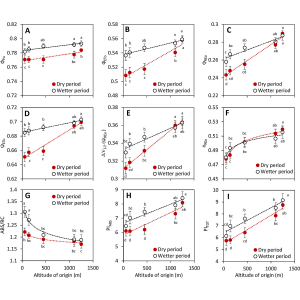 | Pšidová, E; Živčák, M; adn Orlović, Stojnić S S; Gömöry, D; Kučerová, J; Ditmarová, Ľ; Střelcová, K; Brestič, M; Kalaji, H M Altitude of origin influences the responses of PSII photochemistry to heat waves in European beech (Fagus sylvatica L.) Journal Article Environmental and Experimental Botany, 152 , pp. 97-106, 2018, ISSN: 00988472. Abstract | Links | BibTeX @article{Pšidová2018,
title = {Altitude of origin influences the responses of PSII photochemistry to heat waves in European beech (Fagus sylvatica L.)},
author = {E. Pšidová and M. Živčák and S. Stojnić adn S. Orlović and D. Gömöry and J. Kučerová and Ľ. Ditmarová and K. Střelcová and M. Brestič and H.M. Kalaji},
doi = {10.1016/j.envexpbot.2017.12.001},
issn = {00988472},
year = {2018},
date = {2018-01-01},
journal = {Environmental and Experimental Botany},
volume = {152},
pages = {97-106},
abstract = {The photosynthetic responses to the combined effect of drought and heat stress were studied in leaves of 19-years-old European beech (Fagus sylvatica L.) trees originating from five provenances in Central Europe differing by altitude (55–1250 m), and grown in the same experimental plot. The measurements were conducted at the beginning of heat waves, under two different conditions: during a dry period (middle of July) and after recovery in wetter period, at the beginning of August. The decreases of stomatal conductance (gs) and net photosynthesis rate (ACO2) during drought and heat wave stress were very similar in all provenances. However, we observed distinct response of PSII photochemistry on combined drought and high temperature stress, well associated with altitude of origin of the beech provenances. Measurements of pulse amplitude modulated (PAM) fluorescence identified maintenance of a high electron transport rate in beech provenances from high altitudes under drought and heat wave conditions, associated with some decrease of excitation pressure on PSII. This can be explained by enhanced capacity of alternative electron sinks to utilize the excess of electrons as a photoprotective mechanism. The analyses of fast chlorophyll fluorescence kinetics confirmed the differences in responses of PSII photochemistry between provenances originating from different altitudes. Compared with provenances at higher altitudes, we found more sensitive response (i.e. more limited electron transport at the PSII acceptor side and changes in the size of light harvesting complexes) to drought and heat stress, in those growing at low altitudes. Our results support the hypothesis that the provenances originating from higher altitudes possess enhanced phenotypic plasticity related to photoprotective responses, resulting from the long-term adaptation to marginal mountain conditions.},
keywords = {},
pubstate = {published},
tppubtype = {article}
}
The photosynthetic responses to the combined effect of drought and heat stress were studied in leaves of 19-years-old European beech (Fagus sylvatica L.) trees originating from five provenances in Central Europe differing by altitude (55–1250 m), and grown in the same experimental plot. The measurements were conducted at the beginning of heat waves, under two different conditions: during a dry period (middle of July) and after recovery in wetter period, at the beginning of August. The decreases of stomatal conductance (gs) and net photosynthesis rate (ACO2) during drought and heat wave stress were very similar in all provenances. However, we observed distinct response of PSII photochemistry on combined drought and high temperature stress, well associated with altitude of origin of the beech provenances. Measurements of pulse amplitude modulated (PAM) fluorescence identified maintenance of a high electron transport rate in beech provenances from high altitudes under drought and heat wave conditions, associated with some decrease of excitation pressure on PSII. This can be explained by enhanced capacity of alternative electron sinks to utilize the excess of electrons as a photoprotective mechanism. The analyses of fast chlorophyll fluorescence kinetics confirmed the differences in responses of PSII photochemistry between provenances originating from different altitudes. Compared with provenances at higher altitudes, we found more sensitive response (i.e. more limited electron transport at the PSII acceptor side and changes in the size of light harvesting complexes) to drought and heat stress, in those growing at low altitudes. Our results support the hypothesis that the provenances originating from higher altitudes possess enhanced phenotypic plasticity related to photoprotective responses, resulting from the long-term adaptation to marginal mountain conditions. |
 | Kučerová, Jana; Konôpková, Alena; Pšidová, Eva; Kurjak, Daniel; Jamnická, Gabriela; Slugenová, Kristína; Gömöry, Dušan; Ditmarová, Ľubica Adaptive variation in physiological traits of beech provenances in Central Europe Journal Article iForest-Biogeosciences and Forestry, 11 (1), pp. 24-31, 2018. Abstract | Links | BibTeX @article{adnKonôpková2018,
title = {Adaptive variation in physiological traits of beech provenances in Central Europe},
author = {Jana Kučerová and Alena Konôpková and Eva Pšidová and Daniel Kurjak and Gabriela Jamnická and Kristína Slugenová and Dušan Gömöry and Ľubica Ditmarová},
doi = {10.3832/ifor2291-010},
year = {2018},
date = {2018-01-01},
journal = {iForest-Biogeosciences and Forestry},
volume = {11},
number = {1},
pages = {24-31},
abstract = { Current climate changes can led to a decline of local beech populations fully adapted to previous climate conditions. In this context, the issue of variation in adaptive traits becomes important. A field experiment with 18-year-old trees of Fagus sylvatica L. was conducted on provenance plot located in Tále (Central Slovakia), where physiological responses of five beech provenances originating from contrasting sites along an altitudinal gradient from 55 to 1100 m a.s.l. across the range of the natural beech distribution were studied. Stomatal characteristics, parameters of chlorophyll a fluorescence and gas exchange parameters were determined. Overall, we observed a significant increase in physiological performance at the leaf level with increasing altitude of origin. Provenances from the higher altitudes showed higher CO2 assimilation rate, stomatal density, potential conductance indices and photochemical efficiency, and lower capability for dissipation of energy by heat. A similar pattern of response was recorded in relation to the precipitation regime of sites of origin. Moreover, in the context of the temperature regime, several negative trends were observed.},
keywords = {},
pubstate = {published},
tppubtype = {article}
}
Current climate changes can led to a decline of local beech populations fully adapted to previous climate conditions. In this context, the issue of variation in adaptive traits becomes important. A field experiment with 18-year-old trees of Fagus sylvatica L. was conducted on provenance plot located in Tále (Central Slovakia), where physiological responses of five beech provenances originating from contrasting sites along an altitudinal gradient from 55 to 1100 m a.s.l. across the range of the natural beech distribution were studied. Stomatal characteristics, parameters of chlorophyll a fluorescence and gas exchange parameters were determined. Overall, we observed a significant increase in physiological performance at the leaf level with increasing altitude of origin. Provenances from the higher altitudes showed higher CO2 assimilation rate, stomatal density, potential conductance indices and photochemical efficiency, and lower capability for dissipation of energy by heat. A similar pattern of response was recorded in relation to the precipitation regime of sites of origin. Moreover, in the context of the temperature regime, several negative trends were observed. |
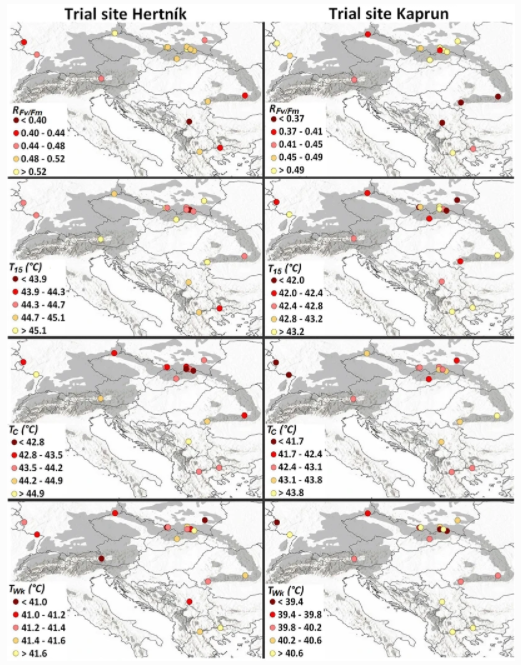 | Konôpková, Alena; Kurjak, Daniel; Kmeť, Jaroslav; Klumpp, Raphael; Longauer, Roman; Ditmarová, Ľubica; Gömöry, Dušan Differences in photochemistry and response to heat stress between silver fir (Abies alba Mill.) provenances Journal Article Trees-Structure and Function, 32 (1), pp. 73-76, 2018, ISSN: 0931-1890. Abstract | Links | BibTeX @article{Konôpková2018b,
title = {Differences in photochemistry and response to heat stress between silver fir (\textit{Abies alba} Mill.) provenances},
author = {Alena Konôpková and Daniel Kurjak and Jaroslav Kmeť and Raphael Klumpp and Roman Longauer and Ľubica Ditmarová and Dušan Gömöry },
doi = {10.1007/s00468-017-1612-9},
issn = {0931-1890},
year = {2018},
date = {2018-01-01},
journal = {Trees-Structure and Function},
volume = {32},
number = {1},
pages = {73-76},
abstract = {Forest ecosystems are frequently exposed to heat stress, which adversely affects their growth, performance, and ultimately survival. The knowledge of physiological responses to heat can help mitigate the effects of climate change by facilitating the choosing of suitable reproductive material for future reforestation programs. However, the intraspecific variation of adaptive traits, including the response to heat, has not been well documented. Therefore, we attempted to determine how PSII photochemistry of different silver fir (Abies alba Mill.) provenances varies in responses to heat stress and to reveal if intraspecific variation in PSII performance and thermostability is more affected by the climate of provenance origin or the plantation site. We tested 17 fir provenances sampled at two contrasting international provenance trial sites: Hertník in Slovakia (390 m a.s.l.) and Kaprun in Austria (1100 m a.s.l.). Short-term heat stress was simulated for seven temperatures ranging from 20 to 51 °C using a water bath. The PSII thermotolerance was assessed via parameters of chlorophyll a fluorescence derived from the OKJIP transient. We observed several climatic variables of the provenances that significantly affected the photochemistry performance and thermostability of PSII, reflecting an additive hereditary basis. Almost all measured parameters varied significantly between trial plots and showed significant trial-by-provenance interactions pointing to acclimation triggered by the different conditions at the trial plots. Overall, the performance of PSII under non-stressing conditions and after heat treatment was better for provenances growing at the warmer trial site at Hertník.},
keywords = {},
pubstate = {published},
tppubtype = {article}
}
Forest ecosystems are frequently exposed to heat stress, which adversely affects their growth, performance, and ultimately survival. The knowledge of physiological responses to heat can help mitigate the effects of climate change by facilitating the choosing of suitable reproductive material for future reforestation programs. However, the intraspecific variation of adaptive traits, including the response to heat, has not been well documented. Therefore, we attempted to determine how PSII photochemistry of different silver fir (Abies alba Mill.) provenances varies in responses to heat stress and to reveal if intraspecific variation in PSII performance and thermostability is more affected by the climate of provenance origin or the plantation site. We tested 17 fir provenances sampled at two contrasting international provenance trial sites: Hertník in Slovakia (390 m a.s.l.) and Kaprun in Austria (1100 m a.s.l.). Short-term heat stress was simulated for seven temperatures ranging from 20 to 51 °C using a water bath. The PSII thermotolerance was assessed via parameters of chlorophyll a fluorescence derived from the OKJIP transient. We observed several climatic variables of the provenances that significantly affected the photochemistry performance and thermostability of PSII, reflecting an additive hereditary basis. Almost all measured parameters varied significantly between trial plots and showed significant trial-by-provenance interactions pointing to acclimation triggered by the different conditions at the trial plots. Overall, the performance of PSII under non-stressing conditions and after heat treatment was better for provenances growing at the warmer trial site at Hertník. |
2017
|
 | Krajmerová, D; Hrivnák, M; Ditmarová, Ľ; Jamnická, G; Kmeť, J; Kurjak, D; Gömöry, D Nucleotide polymorphisms associated with climate, phenology and physiological traits in European beech (Fagus sylvatica L.) Journal Article New Forests, 48 (3), pp. 463-477, 2017. BibTeX @article{Krajmerová2017,
title = {Nucleotide polymorphisms associated with climate, phenology and physiological traits in European beech (Fagus sylvatica L.)},
author = {D. Krajmerová and M. Hrivnák and Ľ. Ditmarová and G. Jamnická and J. Kmeť and D. Kurjak and D. Gömöry},
year = {2017},
date = {2017-01-01},
journal = {New Forests},
volume = {48},
number = {3},
pages = {463-477},
keywords = {},
pubstate = {published},
tppubtype = {article}
}
|
2016
|
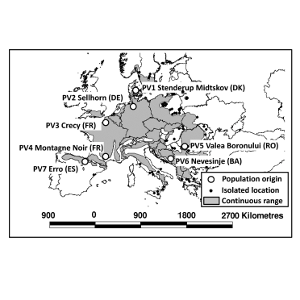 | Bolte, A; Czajkowski, T; Cocozza, C; Tognetti, R; De_Miguel, M; Pšídová, E; Ditmarová, Ľ; Dinca, L; Dlezon, S; Cochard, H; Ræbild, A; De_Luis, M; Cvjetkovic, B; Heiri, C; Müller, J Desiccation and Mortality Dynamics in Seedlings of Different European Beech (Fagus sylvatica L.) Populations under Extreme Drought Conditions Journal Article Front. Plant Sci., 7 (751), 2016. Links | BibTeX @article{Bolte2016,
title = {Desiccation and Mortality Dynamics in Seedlings of Different European Beech (Fagus sylvatica L.) Populations under Extreme Drought Conditions},
author = {A. Bolte and T. Czajkowski and C. Cocozza and R. Tognetti and M. De_Miguel and E. Pšídová and Ľ. Ditmarová and L. Dinca and S. Dlezon and H. Cochard and A. Ræbild and M. De_Luis and B. Cvjetkovic and C. Heiri and J. Müller},
doi = {10.3389/fpls.2016.00751},
year = {2016},
date = {2016-01-01},
journal = {Front. Plant Sci.},
volume = {7},
number = {751},
keywords = {},
pubstate = {published},
tppubtype = {article}
}
|
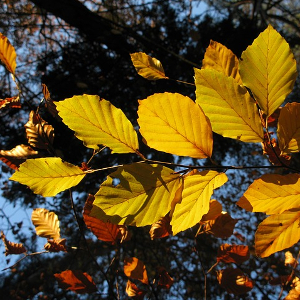 | Cocozza, C; De_Miguel, M; Pšidová, E; Ditmarová, Ľ; Marino, S; Maiuro, L; Alvino, A; Czajkowski, T; Bolte, A; Tognetti, R Variation in Ecophysiological Traits and Drought Tolerance of Beech (Fagus sylvatica L.) Seedlings from Different Populations Journal Article Front. Plant Sci., 7 (886), 2016. Links | BibTeX @article{Cocozza2016,
title = {Variation in Ecophysiological Traits and Drought Tolerance of Beech (Fagus sylvatica L.) Seedlings from Different Populations},
author = {C. Cocozza and M. De_Miguel and E. Pšidová and Ľ. Ditmarová and S. Marino and L. Maiuro and A. Alvino and T. Czajkowski and A. Bolte and R. Tognetti},
doi = {10.3389/fpls.2016.00886},
year = {2016},
date = {2016-01-01},
journal = {Front. Plant Sci.},
volume = {7},
number = {886},
keywords = {},
pubstate = {published},
tppubtype = {article}
}
|
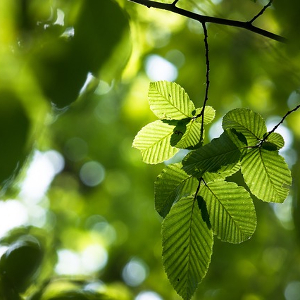 | Ježík, M; Blaženec, M; Kučera, J; Střelcová, K; Ditmarová, Ľ The response of intra-annual stem circumference increase of young European beech provenances to 2012-2014 weather variability Journal Article i-Forest, 9 (6), pp. 960-969, 2016, ISSN: 1971-7458. Abstract | Links | BibTeX @article{Ježík2016,
title = {The response of intra-annual stem circumference increase of young European beech provenances to 2012-2014 weather variability},
author = {M. Ježík and M. Blaženec and J. Kučera and K. Střelcová and Ľ. Ditmarová},
url = {http://www.sisef.it/iforest/contents/?id=ifor1829-009},
doi = {10.3832/ifor1829-009},
issn = {1971-7458},
year = {2016},
date = {2016-01-01},
journal = {i-Forest},
volume = {9},
number = {6},
pages = {960-969},
abstract = {The increasing frequency and severity of extreme weather events, especially droughts, arising from on-going climate changes negatively affect productivity and stability of forest ecosystems. Understanding species responses and suitable ecotypes that are able of adapting to new environmental conditions is increasingly important. The objective of this study was to quantify the relationships between the inter-annual stem circumference increase (SCI) of five European beech (Fagus sylvatica L.) provenances and weather variability during 2012-2014 in a provenance trial located in central Slovakia. SCIs were extracted on daily and weekly scale from hourly data of circumference changes. To detect the main environmental factors influencing SCI seasonal dynamics, intra-seasonal moving correlation functions were calculated. All five provenances responded synchronously to weather conditions, with high correlations among them during the growing season on both daily and weekly scale. The photoperiod exhibited a synchronizing effect on the seasonal peak of SCI as a sign of tree adaptation to long-term seasonal variations in climate. Temperature was the most significant factor influencing SCI dynamics at the beginning of the season. During the summer months, a precipitation deficit, heat waves and the consequently decreased soil water potential significantly affected the SCI of young beech trees, despite the fact that the provenance plot was situated in an area of optimum beech growth. Not only the severity and duration were important but also the timing of drought within a season. Within all seasons, the lowest SCI values were recorded for the provenance from the lowest altitude and the most oceanic climate (northern Germany). A comparison of daily and weekly SCI with first derivatives of growth functions indicated that SCIs were closely related to theoretical incremental processes, especially on a weekly scale. In young beech trees, SCI seemed to represent an appropriate proxy for studying intra-seasonal incremental processes. A newly designed SASB (self adjusting sharp beginning) function fit these processes better than the Gompertz function.},
keywords = {},
pubstate = {published},
tppubtype = {article}
}
The increasing frequency and severity of extreme weather events, especially droughts, arising from on-going climate changes negatively affect productivity and stability of forest ecosystems. Understanding species responses and suitable ecotypes that are able of adapting to new environmental conditions is increasingly important. The objective of this study was to quantify the relationships between the inter-annual stem circumference increase (SCI) of five European beech (Fagus sylvatica L.) provenances and weather variability during 2012-2014 in a provenance trial located in central Slovakia. SCIs were extracted on daily and weekly scale from hourly data of circumference changes. To detect the main environmental factors influencing SCI seasonal dynamics, intra-seasonal moving correlation functions were calculated. All five provenances responded synchronously to weather conditions, with high correlations among them during the growing season on both daily and weekly scale. The photoperiod exhibited a synchronizing effect on the seasonal peak of SCI as a sign of tree adaptation to long-term seasonal variations in climate. Temperature was the most significant factor influencing SCI dynamics at the beginning of the season. During the summer months, a precipitation deficit, heat waves and the consequently decreased soil water potential significantly affected the SCI of young beech trees, despite the fact that the provenance plot was situated in an area of optimum beech growth. Not only the severity and duration were important but also the timing of drought within a season. Within all seasons, the lowest SCI values were recorded for the provenance from the lowest altitude and the most oceanic climate (northern Germany). A comparison of daily and weekly SCI with first derivatives of growth functions indicated that SCIs were closely related to theoretical incremental processes, especially on a weekly scale. In young beech trees, SCI seemed to represent an appropriate proxy for studying intra-seasonal incremental processes. A newly designed SASB (self adjusting sharp beginning) function fit these processes better than the Gompertz function. |
2015
|
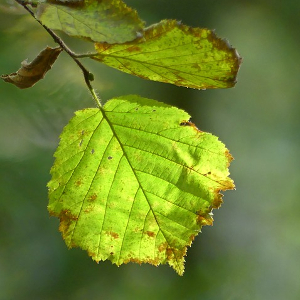 | Gömöry, D; Ditmarová, Ľ; Hrivnák, M; Jamnická, G; Kmeť, J; Krajmerová, D; Kurjak, D Differentiation in phenological and physiological traits in European beech (Fagus sylvatica L.). Journal Article European Journal of Forest Research, 134 (6), pp. 1075–1085, 2015. Links | BibTeX @article{D.2015,
title = {Differentiation in phenological and physiological traits in European beech \textit{(Fagus sylvatica L.).}},
author = {D. Gömöry and Ľ. Ditmarová and M. Hrivnák and G. Jamnická and J. Kmeť and D. Krajmerová and D. Kurjak},
url = {http://link.springer.com/article/10.1007/s10342-015-0910-2},
year = {2015},
date = {2015-09-15},
journal = {European Journal of Forest Research},
volume = {134},
number = {6},
pages = {1075–1085},
keywords = {},
pubstate = {published},
tppubtype = {article}
}
|
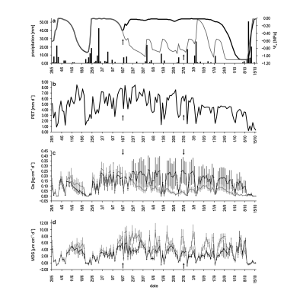 | Ježík, M; Blaženec, M; Letts, M G; Ditmarová, Ľ; Sitková, Z; Střelcová, K Assessing seasonal drought stress response in Norway spruce (Picea abies (L.) Karst.) by monitoring stem circumference and sap flow Journal Article Ecohydrology, 8 (3), pp. 378–386, 2015. Links | BibTeX @article{M.2015b,
title = {Assessing seasonal drought stress response in Norway spruce (\textit{Picea abies} (L.) Karst.) by monitoring stem circumference and sap flow},
author = {M. Ježík and M. Blaženec and M.G. Letts and Ľ. Ditmarová and Z. Sitková and K. Střelcová},
url = {http://onlinelibrary.wiley.com/doi/10.1002/eco.1536/full},
year = {2015},
date = {2015-04-01},
journal = {Ecohydrology},
volume = {8},
number = {3},
pages = {378–386},
keywords = {},
pubstate = {published},
tppubtype = {article}
}
|
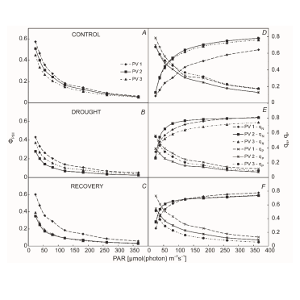 | Pšidová, E; Ditmarová, Ľ; Jamnická, G; Kurjak, D; Majerová, J; Czajkowski, T; Bolte, A Photosynthetic response of beech seedlings of different origin to water deficit Journal Article Photosynthetica, 53 (2), pp. 187–194, 2015. Links | BibTeX @article{E.2015,
title = {Photosynthetic response of beech seedlings of different origin to water deficit},
author = {E. Pšidová and Ľ. Ditmarová and G. Jamnická and D. Kurjak and J. Majerová and T. Czajkowski and A. Bolte},
url = {http://link.springer.com/article/10.1007/s11099-015-0101-x},
year = {2015},
date = {2015-03-02},
journal = {Photosynthetica},
volume = {53},
number = {2},
pages = {187–194},
keywords = {},
pubstate = {published},
tppubtype = {article}
}
|
2013
|
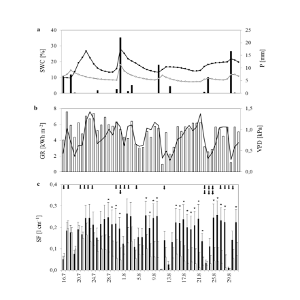 | Střelcová, K; Kurjak, D; Leštianska, A; Kovalčíková, D; Ditmarová, Ľ; Škvarenina, J; Ahmed, Y A R Differences in transpiration of Norway spruce drought stressed trees and trees well supplied with water Journal Article Biologia, 68 (6), pp. 1118–1122, 2013. Links | BibTeX @article{K.2013,
title = {Differences in transpiration of Norway spruce drought stressed trees and trees well supplied with water},
author = {K. Střelcová and D. Kurjak and A. Leštianska and D. Kovalčíková and Ľ. Ditmarová and J. Škvarenina and Y.A.R. Ahmed},
url = {http://link.springer.com/article/10.2478/s11756-013-0257-4},
year = {2013},
date = {2013-10-20},
journal = {Biologia},
volume = {68},
number = {6},
pages = {1118–1122},
keywords = {},
pubstate = {published},
tppubtype = {article}
}
|
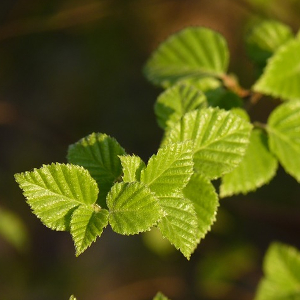 | Jamnická, G; Ditmarová, Ľ; Kurjak, D; Kmeť, J; Pšidová, E; Macková, M; Gömöry, D; Střelcová, K The soil hydrogel improved photosynthetic performance of beech seedlings treated under drought Journal Article Plant Soil and Environment, 59 (10), pp. 446-451, 2013. Links | BibTeX @article{G.2013,
title = {The soil hydrogel improved photosynthetic performance of beech seedlings treated under drought},
author = {G. Jamnická and Ľ. Ditmarová and D. Kurjak and J. Kmeť and E. Pšidová and M. Macková and D. Gömöry and K. Střelcová},
url = {http://www.agriculturejournals.cz/publicFiles/102483.pdf},
year = {2013},
date = {2013-09-10},
journal = {Plant Soil and Environment},
volume = {59},
number = {10},
pages = {446-451},
keywords = {},
pubstate = {published},
tppubtype = {article}
}
|
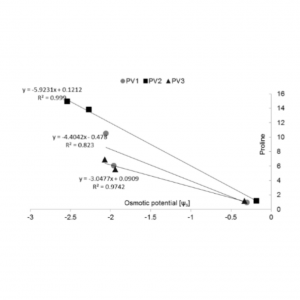 | Pšidová, E; Ditmarová, Ľ; Jamnická, G; Váľka, J; Gömöry, D Assessment of the impact of drought stress on particular biochemical and physiological characteristics of beech saplings leaves from different provenances Journal Article Folia Oecologica, 40 (1), pp. 97-106, 2013, ISSN: 1336-5266. Abstract | Links | BibTeX @article{Pšidová2013,
title = {Assessment of the impact of drought stress on particular biochemical and physiological characteristics of beech saplings leaves from different provenances},
author = {E. Pšidová and Ľ. Ditmarová and G. Jamnická and J. Váľka and D. Gömöry},
url = {http://ife.sk/wp-content/uploads/2016/10/Psidova.pdf},
issn = {1336-5266},
year = {2013},
date = {2013-01-01},
journal = {Folia Oecologica},
volume = {40},
number = {1},
pages = {97-106},
abstract = {There were studied particular biochemical and physiological characteristics of European beech
(Fagus sylvatica L.) saplings of different origin, responding to different water supply. Three
different provenances (PV1, PV2, and PV3) representing the lower margin, the upper margin of
beech distribution range and the optimal growth and environmental conditions for this species
were investigated in a control (well-watered) and a drought treatment. For each provenance,
the water potential values (Ψw) towards the end of the experiment were found low, indicating
a severe water stress. However, there were not observed significant differences in decreasing Ψw
values between the studied provenances. There were also recorded significant decreasing osmotic
potential values (Ψs) influenced by drought. In the saplings of the PV2 provenance, the plants
deprived of watering (drought treatment) showed the largest decrease of osmotic potential values.
All provenances showed significant impacts of drought on the content of assimilatory pigments
(Chl a, Chl b, Chl a + b, Chl a/b, Chl/Car). Nevertheless, the observed changes in individual
provenances did not differ significantly. The analysis of the response to the controlled water deficit
confirmed that the proline content increased significantly for all provenances. The largest increase
in the proline concentration was observed in PV2 provenance. These results imply that the most
sensitive to water deficit was the provenance PV2 from the optimal ecological beech area.},
keywords = {},
pubstate = {published},
tppubtype = {article}
}
There were studied particular biochemical and physiological characteristics of European beech
(Fagus sylvatica L.) saplings of different origin, responding to different water supply. Three
different provenances (PV1, PV2, and PV3) representing the lower margin, the upper margin of
beech distribution range and the optimal growth and environmental conditions for this species
were investigated in a control (well-watered) and a drought treatment. For each provenance,
the water potential values (Ψw) towards the end of the experiment were found low, indicating
a severe water stress. However, there were not observed significant differences in decreasing Ψw
values between the studied provenances. There were also recorded significant decreasing osmotic
potential values (Ψs) influenced by drought. In the saplings of the PV2 provenance, the plants
deprived of watering (drought treatment) showed the largest decrease of osmotic potential values.
All provenances showed significant impacts of drought on the content of assimilatory pigments
(Chl a, Chl b, Chl a + b, Chl a/b, Chl/Car). Nevertheless, the observed changes in individual
provenances did not differ significantly. The analysis of the response to the controlled water deficit
confirmed that the proline content increased significantly for all provenances. The largest increase
in the proline concentration was observed in PV2 provenance. These results imply that the most
sensitive to water deficit was the provenance PV2 from the optimal ecological beech area. |
2012
|
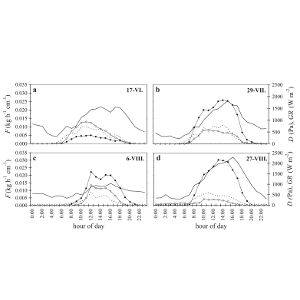 | Kurjak, D; Střelcová, K; Ditmarová, Ľ; Priwitzer, T; Kmeť, J; Homolák, M; Pichler, V Physiological response of irrigated and non-irrigated Norway spruce trees as a consequence of drought in field conditions Journal Article European Journal of Forest Research, 131 (6), pp. 1737–1746, 2012. Links | BibTeX @article{D.2012,
title = {Physiological response of irrigated and non-irrigated Norway spruce trees as a consequence of drought in field conditions},
author = {D. Kurjak and K. Střelcová and Ľ. Ditmarová and T. Priwitzer and J. Kmeť and M. Homolák and V. Pichler},
url = {http://link.springer.com/article/10.1007/s10342-012-0611-z},
year = {2012},
date = {2012-03-22},
journal = {European Journal of Forest Research},
volume = {131},
number = {6},
pages = {1737–1746},
keywords = {},
pubstate = {published},
tppubtype = {article}
}
|
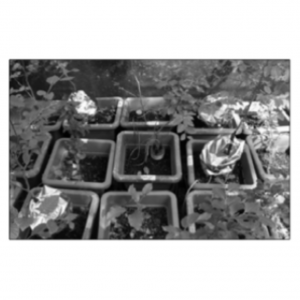 | Kovalčíková, D; Střeclová, K; Ditmarová, Ľ Measurement of European beech transpiration rate under drought stress Journal Article Folia Oecologica, 39 (1), pp. 36-44, 2012, ISSN: 1336-5266. Abstract | Links | BibTeX @article{Kovalčíková2012,
title = {Measurement of European beech transpiration rate under drought stress},
author = {D. Kovalčíková and K. Střeclová and Ľ. Ditmarová},
url = {http://ife.sk/wp-content/uploads/2016/10/kovalcikova_web.pdf},
issn = {1336-5266},
year = {2012},
date = {2012-01-01},
journal = {Folia Oecologica},
volume = {39},
number = {1},
pages = {36-44},
abstract = {The paper presents results of a pilot measurement of transpiration rate in European beech plants under drought stress. The measurement was carried out with “Baby EMS 62 modular sap flow systems for small stems or branches”. The plants used for measuring the transpiration rate were 4-year-old, the measurements was carried out in the summer 2010. The trees were divided into two groups: a drought-stressed group and a regularly irrigated (control) group. The simulation of drought started on July 9 2010, the measurement of sap flow on August 20 2010. In order to find out the possibility for the transpiration recovery, irrigation was applied after a severe drought exposure on the drought-stressed plants on August 24 2010. Despite expectations, the irrigation did not influence transpiration of the drought-stressed plants, although the absolute value of the soil water potential dropped to a minimum. The drought-stressed individuals achieved substantially lower values of transpiration rate, both before and after irrigation, in comparison with the control group. Further, dependence between transpiration and meteorological factors was investigated. The meteorological factors in concern are continually recorded at the mesoclimatic station situated in the “Borová hora” Arboretum. The values of transpiration rate for the drought-stressed individuals were less dependent on meteorological factors (relation fitted with a polynomial regression function of the second order) than for the control plants.},
keywords = {},
pubstate = {published},
tppubtype = {article}
}
The paper presents results of a pilot measurement of transpiration rate in European beech plants under drought stress. The measurement was carried out with “Baby EMS 62 modular sap flow systems for small stems or branches”. The plants used for measuring the transpiration rate were 4-year-old, the measurements was carried out in the summer 2010. The trees were divided into two groups: a drought-stressed group and a regularly irrigated (control) group. The simulation of drought started on July 9 2010, the measurement of sap flow on August 20 2010. In order to find out the possibility for the transpiration recovery, irrigation was applied after a severe drought exposure on the drought-stressed plants on August 24 2010. Despite expectations, the irrigation did not influence transpiration of the drought-stressed plants, although the absolute value of the soil water potential dropped to a minimum. The drought-stressed individuals achieved substantially lower values of transpiration rate, both before and after irrigation, in comparison with the control group. Further, dependence between transpiration and meteorological factors was investigated. The meteorological factors in concern are continually recorded at the mesoclimatic station situated in the “Borová hora” Arboretum. The values of transpiration rate for the drought-stressed individuals were less dependent on meteorological factors (relation fitted with a polynomial regression function of the second order) than for the control plants. |
 | Pšidová, E; Jamnická, G; Ditmarová, Ľ A preliminary study on physiological changes of Central European beech provenances in response to progressive drought stress Journal Article Folia Oecologica, 39 (1), pp. 63-70, 2012, ISSN: 1336-5266. Abstract | Links | BibTeX @article{Pšidová2012,
title = {A preliminary study on physiological changes of Central European beech provenances in response to progressive drought stress},
author = {E. Pšidová and G. Jamnická and Ľ. Ditmarová},
url = {http://ife.sk/wp-content/uploads/2016/10/psidova_web.pdf},
issn = {1336-5266},
year = {2012},
date = {2012-01-01},
journal = {Folia Oecologica},
volume = {39},
number = {1},
pages = {63-70},
abstract = {Four-year seedlings of two European beech ecotypes (Fagus sylvatica L.) were grown under well-watered and drought conditions for 51 days. Two populations were from the same medium-wet climatic region, but they differed in altitude. The results showed that there were significant differences in responses to different watering regimes in both provenances tested. Drought reduced quantum yield of photosystem II (PS II), decreased electron transport rate (ETR) through photosystem II and photochemical quenching (qP). More dissipation of energy excess (qN) was found in PV1 under drought-stress conditions. Water-deficit was associated with increases in proline content. Moreover, drought-treated seedlings of both provenances had significantly decreased chlorophyll pigment contents (Chl a, Chl b, Chl a + b) and carotenoids (Car x + c). Drought also influenced the height and stem diameter of seedlings. However, the differences between the provenances were statistically significant in drought stressed plants only in case of proline content and fluorescence parameter qN.},
keywords = {},
pubstate = {published},
tppubtype = {article}
}
Four-year seedlings of two European beech ecotypes (Fagus sylvatica L.) were grown under well-watered and drought conditions for 51 days. Two populations were from the same medium-wet climatic region, but they differed in altitude. The results showed that there were significant differences in responses to different watering regimes in both provenances tested. Drought reduced quantum yield of photosystem II (PS II), decreased electron transport rate (ETR) through photosystem II and photochemical quenching (qP). More dissipation of energy excess (qN) was found in PV1 under drought-stress conditions. Water-deficit was associated with increases in proline content. Moreover, drought-treated seedlings of both provenances had significantly decreased chlorophyll pigment contents (Chl a, Chl b, Chl a + b) and carotenoids (Car x + c). Drought also influenced the height and stem diameter of seedlings. However, the differences between the provenances were statistically significant in drought stressed plants only in case of proline content and fluorescence parameter qN. |
2011
|
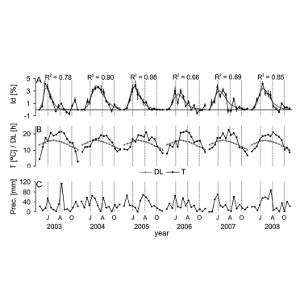 | Ježík, M; Blaženec, M; Střelcová, K; Ditmarová, Ľ The impact of the 2003-2008 weather variability on intra-annual stem diameter changes of beech trees at a submontane site in central Slovakia Journal Article Dendrochronologia, 29 , pp. 227-235, 2011. BibTeX @article{Ježík2011,
title = {The impact of the 2003-2008 weather variability on intra-annual stem diameter changes of beech trees at a submontane site in central Slovakia},
author = {M. Ježík and M. Blaženec and K. Střelcová and Ľ. Ditmarová},
year = {2011},
date = {2011-01-01},
journal = {Dendrochronologia},
volume = {29},
pages = {227-235},
keywords = {},
pubstate = {published},
tppubtype = {article}
}
|
![Drought and aluminium as stress factors in Norway spruce (Picea abies [L.]Karst) seedlings](https://ife.sk/wp-content/uploads/2016/10/IFE_ditmarova_lubica_image16.png) | Slugeňová, K; Ditmarová, Ľ; Kurjak, D; Váľka, J Drought and aluminium as stress factors in Norway spruce (Picea abies [L.]Karst) seedlings Journal Article Journal of Forest Science, 57 (12), pp. 547-554, 2011. BibTeX @article{Slugeňová2011,
title = {Drought and aluminium as stress factors in Norway spruce (Picea abies [L.]Karst) seedlings},
author = {K. Slugeňová and Ľ. Ditmarová and D. Kurjak and J. Váľka},
year = {2011},
date = {2011-01-01},
journal = {Journal of Forest Science},
volume = {57},
number = {12},
pages = {547-554},
keywords = {},
pubstate = {published},
tppubtype = {article}
}
|
2010
|
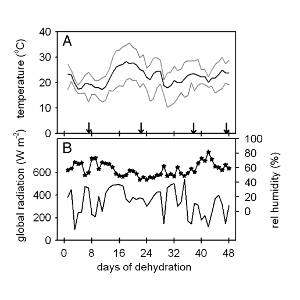 | Ditmarová, Ľ; Kurjak, D; Palmroth, S; Kmeť, J; Střelcová, K Physiological responses of Norway spruce (Picea abies) seedlings to drought stress Journal Article Tree Physiol, 30 (2), pp. 205-213, 2010. BibTeX @article{Ditmarová2010,
title = {Physiological responses of Norway spruce (Picea abies) seedlings to drought stress},
author = {Ľ. Ditmarová and D. Kurjak and S. Palmroth and J. Kmeť and K. Střelcová},
year = {2010},
date = {2010-01-01},
journal = {Tree Physiol},
volume = {30},
number = {2},
pages = {205-213},
keywords = {},
pubstate = {published},
tppubtype = {article}
}
|
 | Kmeť, J; Ditmarová, Ľ; Priwitzer, T; Kurjak, D; Baláž, P; Blaženec, M Physiological limits – a possible cause of spruce decline Journal Article Beskydy, 3 (1), pp. 55-64, 2010, ISSN: 1803-2451. BibTeX @article{Kmeť2010,
title = {Physiological limits – a possible cause of spruce decline},
author = {J. Kmeť and Ľ. Ditmarová and T. Priwitzer and D. Kurjak and P. Baláž and M. Blaženec},
issn = {1803-2451},
year = {2010},
date = {2010-01-01},
journal = {Beskydy},
volume = {3},
number = {1},
pages = {55-64},
keywords = {},
pubstate = {published},
tppubtype = {article}
}
|
2009
|
 | Střelcová, K; Kučera, J; Fleischer, P; Giorgi, S; Gömöryová, E; Škvarenina, J; Ditmarová, Ľ Canopy transpiration of mountain mixed forest as a function of environmetal conditions in boundary layer Journal Article Biologia, 64 (3), pp. 507-511, 2009, ISSN: 1335-6372. BibTeX @article{Střelcová2009,
title = {Canopy transpiration of mountain mixed forest as a function of environmetal conditions in boundary layer},
author = {K. Střelcová and J. Kučera and P. Fleischer and S. Giorgi and E. Gömöryová and J. Škvarenina and Ľ. Ditmarová},
issn = {1335-6372},
year = {2009},
date = {2009-01-01},
journal = {Biologia},
volume = {64},
number = {3},
pages = {507-511},
keywords = {},
pubstate = {published},
tppubtype = {article}
}
|
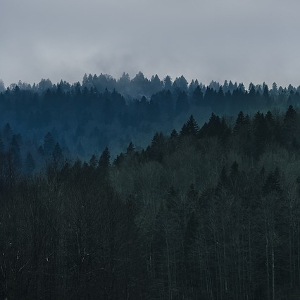 | Kmeť, J; Ditmarová, Ľ; Priwitzer, T; Kurjak, D Physiological aspects of yellowing of spruce advanced regeneration in area of the Kysucke Beskydy Mts. Journal Article Beskydy, 2 (1), pp. 29-38, 2009, ISSN: 1803-2451. BibTeX @article{Kmeť2009,
title = {Physiological aspects of yellowing of spruce advanced regeneration in area of the Kysucke Beskydy Mts.},
author = {J. Kmeť and Ľ. Ditmarová and T. Priwitzer and D. Kurjak},
issn = {1803-2451},
year = {2009},
date = {2009-01-01},
journal = {Beskydy},
volume = {2},
number = {1},
pages = {29-38},
keywords = {},
pubstate = {published},
tppubtype = {article}
}
|
2008
|
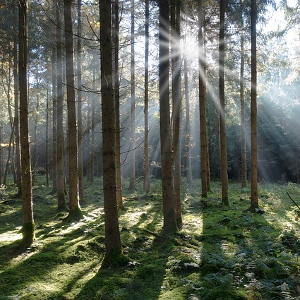 | Kmeť, J; Ditmarová, Ľ; Kurjak, D Drought as stress factor and its role in spruce (Picea abies /L./ Karst) dieback Journal Article Beskydy, 1 (3), pp. 39-46, 2008, ISSN: 1803-2451. BibTeX @article{Kmeť2008,
title = {Drought as stress factor and its role in spruce (Picea abies /L./ Karst) dieback},
author = {J. Kmeť and Ľ. Ditmarová and D. Kurjak},
issn = {1803-2451},
year = {2008},
date = {2008-01-01},
journal = {Beskydy},
volume = {1},
number = {3},
pages = {39-46},
keywords = {},
pubstate = {published},
tppubtype = {article}
}
|
2007
|
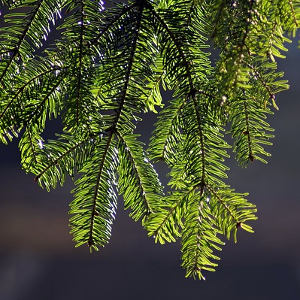 | Ditmarová, Ľ; Kmeť, J; Ježík, M; Váľka, J Mineral nutrition in relation to the Norway spruce forest decline in the region Horný Spiš (Northern Slovakia) Journal Article Journal of Forest Science, 53 (3), pp. 93-100, 2007. BibTeX @article{Ditmarová2007,
title = {Mineral nutrition in relation to the Norway spruce forest decline in the region Horný Spiš (Northern Slovakia)},
author = {Ľ. Ditmarová and J. Kmeť and M. Ježík and J. Váľka},
year = {2007},
date = {2007-01-01},
journal = {Journal of Forest Science},
volume = {53},
number = {3},
pages = {93-100},
keywords = {},
pubstate = {published},
tppubtype = {article}
}
|
2006
|
 | Ditmarová, Ľ; Kmeť, J; Střelcová, K; Gömöry, D Effects of drought on selected physiological parameters of young beech trees under stress conditions Journal Article Ekológia, 25 (1), pp. 1-12, 2006, ISSN: 1335-342X. BibTeX @article{Ditmarová2006,
title = {Effects of drought on selected physiological parameters of young beech trees under stress conditions},
author = {Ľ. Ditmarová and J. Kmeť and K. Střelcová and D. Gömöry},
issn = {1335-342X},
year = {2006},
date = {2006-01-01},
journal = {Ekológia},
volume = {25},
number = {1},
pages = {1-12},
keywords = {},
pubstate = {published},
tppubtype = {article}
}
|
2004
|
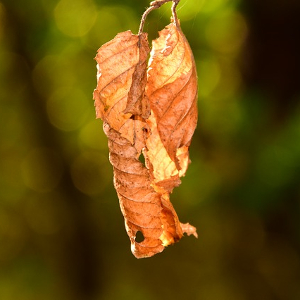 | Ditmarová, Ľ; Kmeť, J; Střelcová, K; Gömöry, D Effects of temperature on selected physiological parameters of young beech trees under stress conditions Journal Article Ekologia, 23 (2), pp. 152-161, 2004, ISSN: 1335-342X. BibTeX @article{Ditmarová2004,
title = {Effects of temperature on selected physiological parameters of young beech trees under stress conditions},
author = {Ľ. Ditmarová and J. Kmeť and K. Střelcová and D. Gömöry},
issn = {1335-342X},
year = {2004},
date = {2004-01-01},
journal = {Ekologia},
volume = {23},
number = {2},
pages = {152-161},
keywords = {},
pubstate = {published},
tppubtype = {article}
}
|
2003
|
 | Kmeť, J; Ditmarová, Ľ Ecophysiological aspects of beech growth (Fagus sylvatica L.) in different stress conditions Journal Article Silva Balcanica, 3 (1), pp. 91-102, 2003, ISSN: 1311-8706. BibTeX @article{Kmeť2003,
title = {Ecophysiological aspects of beech growth (Fagus sylvatica L.) in different stress conditions},
author = {J. Kmeť and Ľ. Ditmarová},
issn = {1311-8706},
year = {2003},
date = {2003-01-01},
journal = {Silva Balcanica},
volume = {3},
number = {1},
pages = {91-102},
keywords = {},
pubstate = {published},
tppubtype = {article}
}
|
2002
|
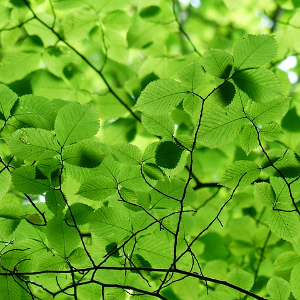 | Ditmarová, Ľ; Kmeť, J Physiological and biochemical aspects of stress impact on beech saplings growing under varying site conditions Journal Article Biologia, 57 (4), pp. 533-540, 2002, ISSN: 1335-6372. BibTeX @article{Ditmarová2002,
title = {Physiological and biochemical aspects of stress impact on beech saplings growing under varying site conditions},
author = {Ľ. Ditmarová and J. Kmeť},
issn = {1335-6372},
year = {2002},
date = {2002-01-01},
journal = {Biologia},
volume = {57},
number = {4},
pages = {533-540},
keywords = {},
pubstate = {published},
tppubtype = {article}
}
|
 | Ditmarová, Ľ; Kmeť, J Health state of beech (Fagus sylvatica L.) trees in terms of latent damage caused by immission load Journal Article Ekologia, 21 (2), pp. 42-52, 2002, ISSN: 1335-342X. BibTeX @article{Ditmarová2002b,
title = {Health state of beech (Fagus sylvatica L.) trees in terms of latent damage caused by immission load},
author = {Ľ. Ditmarová and J. Kmeť},
issn = {1335-342X},
year = {2002},
date = {2002-01-01},
journal = {Ekologia},
volume = {21},
number = {2},
pages = {42-52},
keywords = {},
pubstate = {published},
tppubtype = {article}
}
|
2001
|
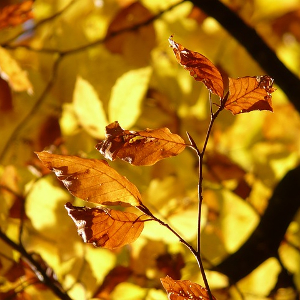 | Kmeť, J; Ditmarová, Ľ Bioindication of beech (Fagus sylvatica L.) photosynthetic apparatus function conditions under stress circumstances Journal Article Ekologia, 20 (2), pp. 200-209, 2001, ISSN: 1335-342X. BibTeX @article{Kmeť2001,
title = {Bioindication of beech (Fagus sylvatica L.) photosynthetic apparatus function conditions under stress circumstances},
author = {J. Kmeť and Ľ. Ditmarová},
issn = {1335-342X},
year = {2001},
date = {2001-01-01},
journal = {Ekologia},
volume = {20},
number = {2},
pages = {200-209},
keywords = {},
pubstate = {published},
tppubtype = {article}
}
|
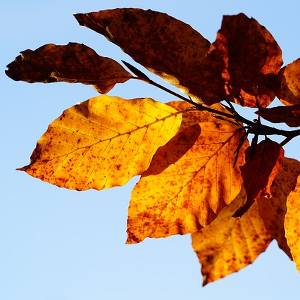 | Kmeť, J; Ditmarová, Ľ Physiological aspects of European beech (Fagus sylvatica L.) health condition in Slovakia Journal Article Journal of Forest Science, 47 (9), pp. 377-386, 2001, ISSN: 1212-4834 2001. BibTeX @article{Kmeť2001b,
title = {Physiological aspects of European beech (Fagus sylvatica L.) health condition in Slovakia},
author = {J. Kmeť and Ľ. Ditmarová},
issn = {1212-4834 2001},
year = {2001},
date = {2001-01-01},
journal = {Journal of Forest Science},
volume = {47},
number = {9},
pages = {377-386},
keywords = {},
pubstate = {published},
tppubtype = {article}
}
|
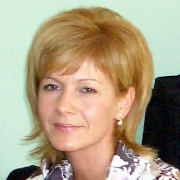



















![Drought and aluminium as stress factors in Norway spruce (Picea abies [L.]Karst) seedlings](https://ife.sk/wp-content/uploads/2016/10/IFE_ditmarova_lubica_image16.png)













